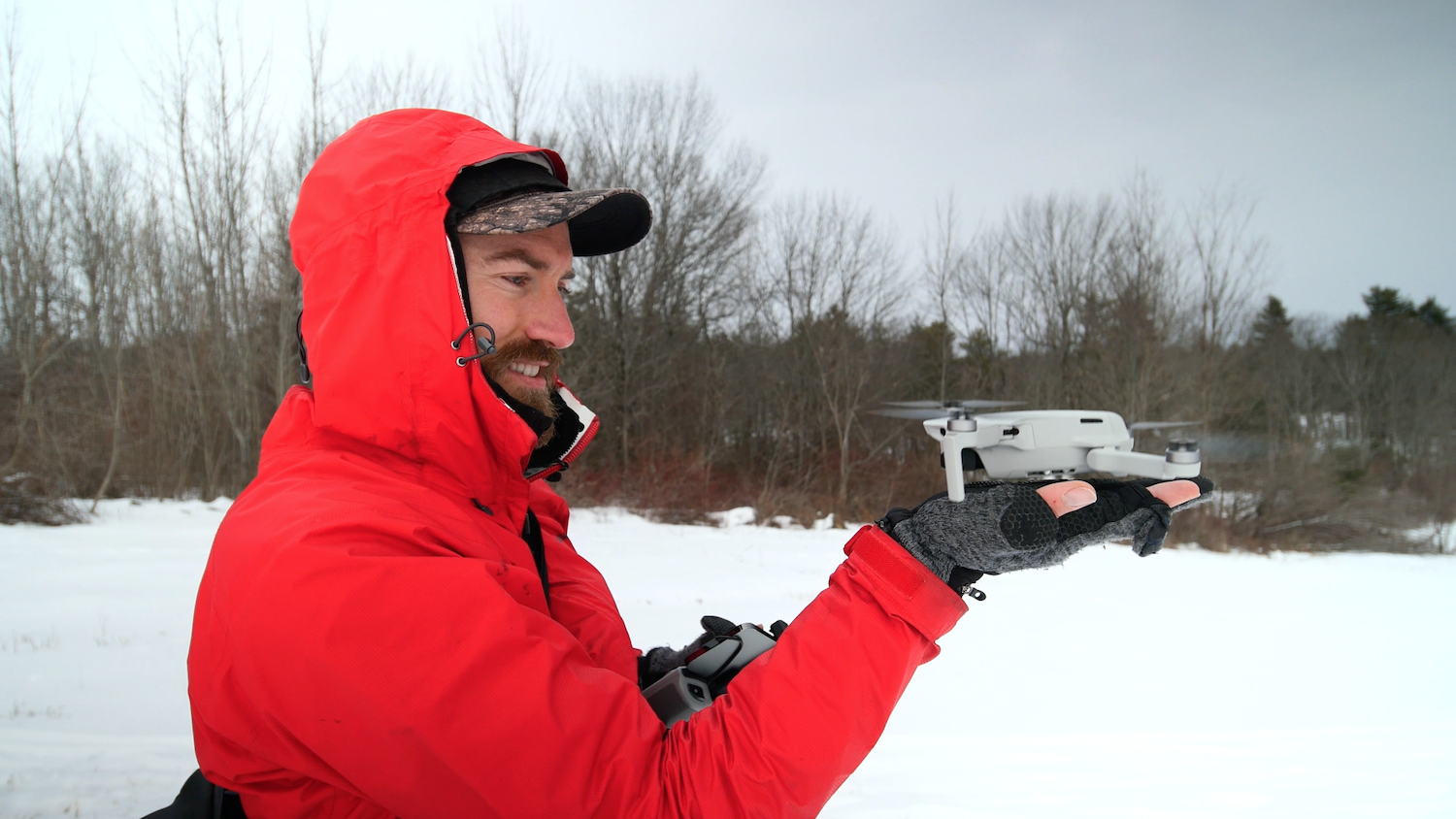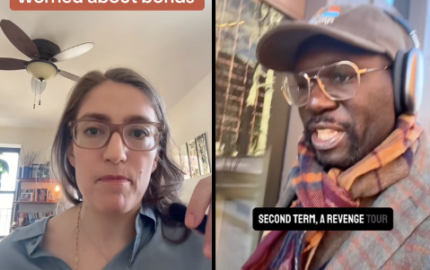EDITOR'S NOTE: This is the second in our five-part video series, Field Testing, in which independent video producer Alexander Trowbridge retreats to a farm to learn the tools and skills necessary for anyone to make compelling visual stories when working alone in the field. Episode 1 is available here, with one coming each of the next three weeks.
Now more than ever, drones are powerful and accessible storytelling tools — not just for filmmakers — but also for the average journalist.
Drones like mine, the DJI Mini 2, give you flying high-res footage (4k), cost less than the average iPhone ($449 on Amazon), and pack down to a remarkably similar size.
Like any piece of gear, drones take practice. Even still, the controls are fairly intuitive — not that different from the average video game.
So on a controller like the one for the Mini 2, the right joystick moves the drone forward, backward and side to side. The left joystick handles the drone’s vertical movement and rotation. A dial under the right index finger controls the tilt of the drone’s camera, and a button under the other index finger starts and stops the recording.
In terms of footage, drone shots add instant production value. They set the scene. They add context; the kind of context you can only get 400 feet above the ground, reminding the audience that your story doesn’t exist in isolation.
Lower to the ground, drones can provide surprisingly intimate portraits. They allow you to orbit a subject, highlighting the epic elements of even the most mundane tasks. (By the way, you get those orbiting shots by flying in one direction while rotating in the opposite direction.)
And because they’re small and simple and cinematic, drones lend themselves to experimentation. It’s easy to try stuff out, though if you’re going to do so indoors, I’d recommend propeller guards ($29.90).
When it comes to filming yourself, drones can be a versatile tripod, for both shots where the camera is stationary and the much more captivating shots where the camera is moving. Drones like the Mini 2 also come with certain pre-programmed movements. Among other things, you can set the drone to fly around you in a circle.
Learn the limits and the rules
Now, drones aren’t perfect.
They’re robot quadcopters. They’re hard to ignore. People — and animals — notice them. They’re loud. And they don’t record their own audio. Which makes sense, because if you strapped a microphone to a drone it would sound like a bunch of angry hornets.
And compared to the rest of your camera gear, drones come with a lot more rules and restrictions.
To name a few: Without explicit permission, no flying near airports, over crowds, above 400 feet, or anywhere near an emergency. (Familiarize yourself with FAA rules before you take to the air, so you don't ruin this for yourself and the rest of us.)
No flying commercially, which means for a paid journalism assignment, without first obtaining a drone pilot’s license. Here’s the process: Register, find a testing center, pay the $160 fee, study, take the test. It’s kinda like getting your driver's license but it’s entirely multiple choice. And you don’t have to demonstrate how well you fly your drone. It’s more about how well you identify the safety risks posed by a cumulonimbus cloud. (Here's more info on that process.)
By the way, according to Chapter 3b of the FAA’s Small Unmanned Aircraft study guide: “Since rising air currents cause cumulonimbus clouds, they are extremely turbulent and pose a significant hazard to flight safety.”
Tools, not toys
One last thing: Be careful. Yeah, drones are easy to fly, but they’re also easy to crash. I crashed my original drone, the DJI Mavic Air 2 ($799) and spent months trying to fix it to no avail. Eventually, I opted for the Mini 2, its smaller, less expensive sibling.
It was actually my hiatus from flying that in many ways completed my drone training. It taught me, the hard way, that a drone is a tool and not a party trick. And it’s not the only tool. In fact, it’s at its most effective when paired with non-flying tools that fill in where it can’t.
But when I didn’t have it, I missed it. Because a drone will take your journalism to new heights. Just make sure those heights are at or below 400 feet.
Watch episode three next: Everything you need (and more) to shoot great selfie video
Alexander Trowbridge is a multimedia journalist and producer. Most recently a fellow with the Nieman Foundation for Journalism at Harvard, he previously worked at "The Late Show With Stephen Colbert," Bloomberg Politics, CBS News and Politico.



